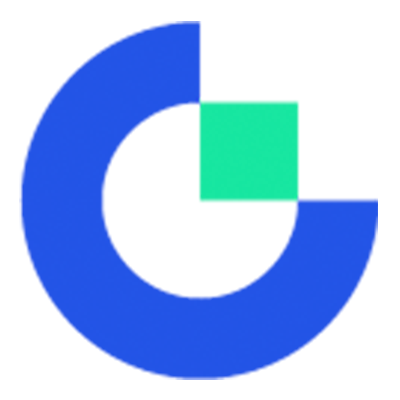Introduction
Are you ready to dive into the exciting world of NFT art? Minting your digital creations as NFTs opens up a realm of possibilities for artists to monetize their work and reach global audiences. In this guide, we'll explore the essential steps to mint NFT art like a pro, from choosing the right blockchain to creating compelling digital masterpieces that resonate with collectors. Here's the article with the requested internal links inserted:
Unleash Your Creativity: Minting NFT Art Like a Pro
The world of NFT art has opened up exciting new possibilities for artists to monetize their work and reach a global audience. Minting your art as an NFT allows you to create unique digital assets that can be bought, sold, and traded on blockchain marketplaces. To mint NFT art like a pro, you'll need to follow a few key steps.
First, choose a blockchain platform to mint your NFT on. Ethereum is currently the most popular choice for NFTs, but other options like Solana and Flow are gaining traction. Each has its own pros and cons in terms of fees, speed, and marketplace integration. Do your research to determine which best fits your needs as an artist.
Next, you'll need to create a crypto Web3 Wallet to store and manage your NFTs. Be sure to securely back up your wallet's seed phrase, as this is the only way to recover your assets if you lose access.
With your wallet set up, you can now connect to an NFT marketplace like OpenSea or Rarible to mint your artwork. The minting process involves uploading your digital file, setting a title and de_script_ion, and paying a gas fee to create the NFT on the blockchain. Gas fees can fluctuate significantly, so monitor prices and mint during off-peak times if possible to save on costs.
When creating your NFT, you have the option to mint a single unique piece or a limited series of editions. Consider your goals as an artist - a 1/1 piece may command a higher price, while a larger edition allows more collectors to own your work. You can also set royalties to earn a percentage of secondary sales.
The key to success is creating high-quality, compelling digital art that resonates with collectors. Experiment with different styles and mediums to find your niche in the NFT art world. Building a strong artistic brand and engaged community around your work is crucial for long-term success in selling art as NFT.
Navigating the NFT Art Marketplace: Platforms and Strategies
When it comes to selling your NFT art, choosing the right marketplace is crucial. Some of the top NFT marketplaces for artists include OpenSea, Rarible, Foundation, and SuperRare. Each platform has its own unique features, audience, and requirements for artists.
OpenSea is the largest NFT marketplace, offering a wide range of digital assets beyond just art. It has low barriers to entry, allowing any artist to mint and list their work. However, this also means more competition. Rarible is another popular option with a focus on digital art and collectibles. It offers a user-friendly interface and allows artists to create "lazy minted" NFTs with no upfront gas fees.
For more curated experiences, platforms like Foundation and SuperRare have stricter artist vetting processes but can offer higher visibility and prices for accepted creators. These platforms often attract serious collectors looking for high-quality digital art.
When choosing an NFT marketplace for artists, consider factors like platform fees, audience demographics, and promotional opportunities. Some platforms offer featured artist spots or curated collections that can boost visibility for emerging creators.
To maximize your success on these platforms, it's important to develop effective NFT art pricing strategies. Research comparable artists and collections to gauge market rates. Consider factors like your artistic reputation, the uniqueness of the piece, and production costs when setting prices.
Many artists use a tiered pricing approach, offering some more affordable pieces alongside higher-priced premium works. This allows you to attract a range of collectors while still maintaining the value of your top pieces. Dynamic pricing models, like Dutch auctions, can also create excitement and urgency around your drops.
Building a strong presence on social media platforms like Twitter and Instagram is crucial for promoting your NFT art. Engage with the NFT community, share behind-the-scenes content, and build anticipation for upcoming drops. Collaborations with other artists or brands can also help expand your reach.
Remember that success in the NFT art world often comes down to creating authentic, high-quality work and fostering genuine connections with your audience. Focus on your artistic vision and let your unique creativity shine through in your digital creations.
Pricing and Selling Your NFT Masterpieces
Pricing your NFT art effectively is crucial for maximizing sales and building a sustainable career as a digital artist. When determining prices for your NFT masterpieces, consider factors such as your artistic reputation, the complexity and uniqueness of the piece, and current market trends.
Research similar artists and collections to gauge appropriate price ranges. NFT marketplaces often provide sales data that can help inform your pricing decisions. For example, according to data from NonFungible.com, the average price of NFT art sales in 2021 was $1,228. However, prices can vary dramatically based on factors like artist recognition and market demand.
Here's a comparison of average NFT art prices across different marketplaces in 2021:
| Marketplace | Average NFT Art Price |
|---|---|
| OpenSea | $872 |
| SuperRare | $5,350 |
| Foundation | $3,180 |
| Rarible | $1,050 |
Keep in mind that these are averages, and individual pieces can sell for much higher or lower amounts depending on various factors.
When selling your NFT art, consider offering a range of price points to attract different types of collectors. You might create limited edition series at lower price points alongside one-of-one pieces at premium prices. This strategy allows you to build a broader collector base while still maintaining the exclusivity of your top works.
Experiment with different sales models, such as fixed price listings, auctions, or Dutch auctions. Each has its own advantages and can create different levels of excitement and urgency around your drops. For example, timed auctions can generate buzz and competitive bidding for highly anticipated pieces.
Don't forget to factor in platform fees and gas costs when pricing your work. Most NFT marketplaces take a percentage of sales, typically ranging from 2.5% to 15%. Gas fees for minting and transferring NFTs on the Ethereum network can also be significant, sometimes reaching hundreds of dollars during peak times.
To maximize your earnings, consider setting royalties on secondary sales. Many NFT marketplaces allow artists to earn a percentage (usually between 5% and 10%) every time their work is resold. This can provide a valuable source of passive income as your art appreciates in value over time.
Remember that pricing in the NFT art world can be highly volatile and influenced by rapidly changing trends. Stay flexible and be prepared to adjust your strategies based on market feedback and your own artistic goals. By carefully considering your pricing and sales approach, you can position yourself for success in the dynamic world of NFT art.
Building Your Brand as an NFT Artist
Establishing a strong personal brand is crucial for success in the competitive world of NFT art. Your brand is not just about your artistic style, but also your story, values, and the unique perspective you bring to the digital art space.
Start by defining your artistic identity. What themes or concepts do you explore in your work? What techniques or mediums set you apart? Develop a consistent visual language across your portfolio that makes your work instantly recognizable. This could include signature color palettes, recurring motifs, or distinctive stylistic elements.
Crafting a compelling artist statement is essential for communicating your vision to potential collectors. Explain the inspiration behind your work, your creative process, and the ideas you're exploring through your art. This narrative helps collectors connect with your work on a deeper level and can justify higher prices for your pieces.
Leverage social media platforms to showcase your work and engage with the NFT community. Twitter and Instagram are particularly important for NFT artists. Share works-in-progress, time-lapse videos of your creation process, and insights into your artistic journey. Platforms like Discord allow you to build a more intimate community of collectors and fans.
Consistency is key in building your brand presence. Aim to post regularly and maintain a cohesive aesthetic across your social media profiles. Engage with your followers by responding to comments and participating in NFT art discussions. This helps build a loyal following that will support your drops and spread the word about your work.
Collaborations can be a powerful way to expand your reach and explore new creative directions. Partner with other artists, brands, or NFT projects to create unique pieces that appeal to multiple audiences. For example, the Bored Ape Yacht Club collaboration with Adidas generated significant buzz and sales, with the collection selling out in minutes and generating over $23 million in revenue.
Consider creating limited edition NFT collections or series that tell a larger story. This can help build anticipation and encourage collectors to "complete the set." For instance, artist Beeple's "Everydays" series, culminating in the record-breaking $69 million sale of "Everydays: The First 5000 Days," demonstrates the power of consistent, long-term creative projects in the NFT space.
Participate in virtual galleries, NFT art shows, and community events to increase your visibility. Platforms like Cryptovoxels and Decentraland host virtual exhibitions where you can showcase your work in immersive 3D environments. These events can attract serious collectors and provide networking opportunities with other artists and industry insiders.
As your brand grows, consider expanding beyond individual artworks. Many successful NFT artists have launched their own tokens, created generative art projects, or even developed virtual worlds around their artistic vision. These expansions can create new revenue streams and deepen engagement with your collector base.
Remember that building a strong brand as an NFT artist is an ongoing process that requires patience and persistence. Stay true to your artistic vision while remaining open to feedback and new opportunities in the rapidly evolving NFT landscape. By consistently delivering high-quality work and engaging authentically with your audience, you can establish yourself as a respected and sought-after creator in the digital art world.
Conclusion
The NFT art world offers unprecedented opportunities for digital creators to monetize their work and connect with global audiences. By mastering the minting process, choosing the right platforms, and developing effective pricing strategies, artists can thrive in this dynamic space. Building a strong personal brand, engaging with the community, and consistently delivering high-quality, unique artworks are key to long-term success. As you embark on your NFT art journey, remember that authenticity and creativity remain the cornerstones of artistic value in both digital and traditional realms.
Risk warning: NFT markets can be highly volatile. Prices may fluctuate dramatically, and trends can shift rapidly. Always conduct thorough research and consider potential risks before investing.



还没有评论,来说两句吧...